Dr. Adnan Akay, Visiting Professor, Sapienza University of Rome - Italy and Emeritus Professor, Carnegie Mellon University - USA
Managing technology and engineering for a sustainable world encompasses social, cultural, economic, human health, and environmental concerns-- all of which also drive public policies. Since everything we do influences the sustainability of the planet to a greater or lesser degree, sustainability is best managed as a shared responsibility, at both local and global levels. Globalization of goods, such as food, energy, textiles, electronics, and transportation vehicles, places a responsibility on suppliers, manufacturers, and the consumers as well as on nations. A fundamental challenge to managing sustainability rests on the ability to estimate the long-term consequences of actions taken in the short-run. In many cases, policies have been developed describing goals and indicators. Another challenge relates to the differences in sustainability practices among nations and affordability of trade-offs across different segments of society, different regions of the world and their traditions. Common to all is the need for education— and an understanding the financial implications of environmental stewardship. The presentation will suggest the planet as a system whose equilibrium is being challenged and briefly review proposed metrics and recommendations to sustain it.
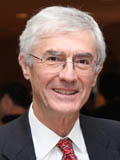
Dr. Adnan Akay — is a visiting professor at Sapienza University of Rome and Emeritus Professor at Carnegie Mellon University. Previously he was the provost at Bilkent University in Ankara, Director of the Civil, Mechanical, and Manufacturing Innovation Division at the US National Science Foundation, Lord Professor and Head of Mechanical Engineering at Carnegie Mellon University, and DeVlieg Professor at Wayne State University. He is a recipient of numerous awards including the ASME Per Brüel Gold Medal for Noise Control and Acoustics and Humboldt Research Award. He is a fellow of PICMET, the American Society of Mechanical Engineers, and the Acoustical Society of America. He was elected as a Distinguished International Member of Institute of Noise Control Engineering of the United States of America. Dr. Akay serves on the advisory boards of several universities and regularly consults with international businesses as a technical advisor.
Dr. Bulent Atalay, Professor, University of Mary Washington and UVA, Fredericksburg, USA
Energy is the lifeblood of Civilization
This keynote has many legs and is based on a graduate course entitled, “Future Alternate Sources of Energy,” taught for nearly two decades by Bulent Atalay at the University of Virginia. The two inseparable aspects of energy are its production and its consumption, and both aspects are ultimately explained by physics and chemistry. Both aspects can have devastating consequences on our planet and these effects must be minimized. The atmosphere is a fine mist, a breathable gaseous blanket overlying the earth. Five-to-nine miles in thickness, it is infinitesimal compared with the 4,000 miles (6400 km) radius of the planet. For the preservation of life on earth, this fragile blanket must be preserved. A maxim gaining popularity globally reads, “There is no planet B!” The underlying physics is not difficult compared with the fundamental physical laws of quantum mechanics and relativity. But it is a messy sort of science, involving mathematical models, and large-number crunching. It creates polarizing domestic and international politics between the owners and the buyers of fossil fuels. And it pits believers of man-made climate change against its deniers. In this discussion of limited length, we will take inventory of many of those “legs” but focus on just two of them: the rudiments of the physics of climate change along with one source of energy production that is clean, virtually inexhaustible, resistant to catastrophic accidents, within reach, but hitherto unattained.
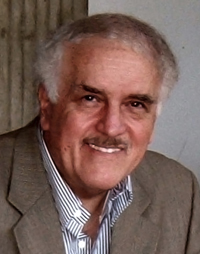
Dr. Bulent Atalay — scientist, artist, author, and lecturer — has been described by NPR, PBS, and the Washington Post as a “Modern Renaissance Man.” He is the author of two successful books on the intersection of art, science, and mathematics, where Leonardo, the pre-eminent Renaissance man, serves as the focal point. His best-selling book, "Math and the Mona Lisa," (Smithsonian Books, 2004) has appeared in 14 languages; and Leonardo's Universe (National Geographic Books, 2009) has appeared in English and Japanese, and was declared, “One of ten must-have books,” by the Britannica. Bulent’s academic background is in theoretical physics, distilled from work at Georgetown, UCal - Berkeley, Princeton, Oxford, and the Institute for Advanced Study, Princeton. He travels around the world lecturing at academic institutions and on cruise ships on the "A-subjects," art, archaeology, astrophysics, atomic physics, and Ataturk, confessing that he knows much less about the "B-subjects," business, banking, biology, and botany... He recently put the finishing touches on “Beyond Genius,” a new book that examines the internal and external factors which produced Leonardo da Vinci, William Shakespeare, Isaac Newton, Ludwig van Beethoven, and Albert Einstein, a pair of pure artists, a pair of pure scientists, and a scientist-artist who straddles the cultures of both. Atalay has given lectures at Caltech, Princeton, Duke, Yale, Harvard, Oxford, NASA, NIST, NIH, Smithsonian, and the National Geographic Society, as well as keynote talks at PICMET ’05, ’10, ’12, ’14, ’16, ’17, and ’19. His website appears at www.bulentatalay.com
Dr. Jaime Parada Avila, Former President of CONACYT and National Academy of Engineering, Mexico
Based on his recent book, Dr. J. Parada shares his vision about managing the investment in innovation to accelerate the economic growth and competitive advantages. This presentation describes the current innovation situation in Mexico, and the reasons to invest in innovation for developing new products, services, solutions, processes, business models and new businesses with added value for clients and customers. The use of the INNCOM integrated innovation model with 8 components is explained. The 8 components are: (1) Value creation for all stake holders of the company, (2) Strategic plan for medium and long-term, (3) The innovation project portfolio, (4) The critical processes to integrate and execute innovation projects, (5) The core competences for innovation, (6) The organization and the governance, (7) The allocation of resources and investment for innovation, and (8) The creation of culture of innovation in the company
It is important to mention the critical role of the information systems and key indicators and metrics of success to evaluate the profitability of the investment in innovation in the enterprise. The role of open innovation ecosystems is important to reinforce the capabilities of the company to collaborate with external experts, universities, and public research centers.
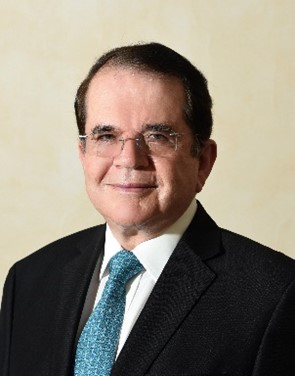
Dr. Jaime Parada Avila — has over 45 years’ experience in the fields of Research, Science and Technology Development, Innovation and Business Management. He was President of the National Council for Science and Technology (CONACYT). Chief Technology and Innovation Officer of important industrial groups like Sidermex, Vitro, Whirlpool, and Cydsa. In the State of Nuevo León, he was the General Director of the Institute of Innovation and Technology Transfer, and Director of the Research and Technology Innovation Park (PIIT). He was the President of the Mexican National Academy of Engineering, and he was awarded with two Honoris Causa Doctor degree in engineering by the University of Sheffield in England and by the Autonomous University of Nuevo León. Dr. Parada was professor at the Engineering Faculty of UNAM and a visiting professor at University of Texas in Austin. He was awarded with the order of merit by the government of Germany, and leadership award from the Association of University Research Parks. He has been member and advisor of several important associations, public research centers, companies, governments, and universities, in the field of innovation. As an entrepreneur he provided support and guidance in high tech companies in the fields of advanced materials, software, and innovation services. He is the author of several papers and a recent book: “How to innovate in companies of excellence”.
Dr Gabriela Dutrénit, Distinguished Professor, Universidad Autónoma Metropolitana (UAM) - Mexico
Latin America and the Caribbean countries are characterized by structural heterogeneity
(productive, social and environmental) and a strong social inequality. The Science, Technology and
Innovation policies prevailing in the region have followed the international trends and combine the
three existing analytical frameworks. Different structures coexist in each country, including a
modern and innovative; a low productivity, and a traditional knowledge. In this keynote we will explore the types of existing structures and discuss the implications for the design of STI policies. We will particularly question the need to formulate a triple/quadruple STI policy to attend each of the structures. This combination of policy brings challenges for the design of a policy mix that integrates instruments that foster innovation in the different existing structures, with a perspective on inclusion and sustainability.
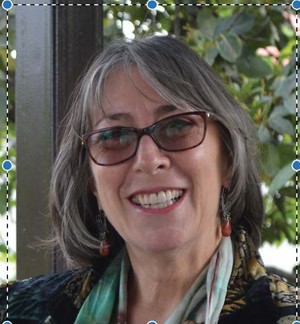
Dr. Gabriela Dutrénit is an economist with a PhD in Science and Technology Research Studies from
the Science Policy Research Unit (SPRU), University of Sussex, UK. She is a professor in the
Master’s and PhD Program in Economics and Innovation Management at the Universidad
Autónoma Metropolitana (UAM), Mexico. Dr Dutrénit is a “Distinguished Professor” of the UAM and
a regular member of the Mexican Academy of Science. She is president of the Latin American
Chapter of this network, LALICS (Latin American Network for Economics of Learning, Innovation,
and Competence Building Systems), and member of the Scientific Board of UNU-MERIT at
Maastricht University. Her research interests include: innovation and development; learning and
technological capability accumulation at the firm level; university–industry linkages; research and
development (R&D), and innovation policy. She has coordinated several evaluations of the Mexican
STI policy.
Dr. Guillermo José Aguirre Esponda, President, SEFI, ADIAT, Academia de Ingeniería México, Former CTO, Grupo Vitro and Deputy Director of Technology, CONACYT – Mexico
One of the most important challenges facing those in charge of managing engineering and technology development tasks is to find the right balance between controlling the tasks and maintaining the freedom and creativity of the participants needed for achieving the targets. This keynote presents an indirect approach to the management and control of design and technology development activities resulting from five-year engineering research program, developed at the University of Cambridge, and applied in the public and private sectors. Dr. Aguirre will present examples and applications of the indirect approach in the industrial sector, federal government, and entrepreneurship.
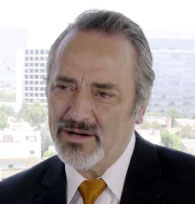
Dr. Guillermo José Aguirre Esponda is the creator of the indirect approach to the application and management of engineering, technology and manufacturing, CINDI®,with which he has created leading products in their markets, government programs that multiplied the national investment in technology by more than 10 times and ventures lauded by Forbes and MIT Technology Review as the most promising in the country. He obtained his Ph.D. from Cambridge University, an M.Sc. from Loughborough University, and a B.Sc. in Engineering from UNAM. He has published more than 100 papers, 7 books and registered 18 patents. He chairs some of the most prestigious engineering and technology organizations in his country and is a visiting professor at MIT. As CTO of Grupo Vitro - one of the largest industrial conglomerates in Mexico (1991-2001), he led the company to obtain the National Technology Award and designed product lines that has been market leaders for more than two decades. As Deputy Director of Technology at CONACYT (2001-2007), he led the country to historic levels of investment in engineering, technology and manufacturing and received the National Business Impulse Award. In his role as a consultant (2007-present), he has helped hundreds of companies and entrepreneurs to grow exponentially and generate billions of dollars in new sales.
John R. McDougall, PICMET Fellow, CEO, SynBioBlox Innovations Ltd and Former President, National Research Council, Canada
A sustainable world is a world in balance with itself. As humans, should work seriously not to disrupt this balance. Levels of production, consumption, waste, and emissions all need to become synergistically integrated – designed, manufactured, managed, and recycled in a manner that maintains a global balance. The major question is not if we should transform our activities in this way, but rather how to do so in a manner that is feasible, both technologically and economically; and comprehensive. Food, water, energy, the basics of life, are important aspects to consider. But infrastructure, building materials and consumer products must also be incorporated.
Circularity is a “whole system” concept for addressing issues and challenges associated with waste – especially carbon-based waste materials such as GHGs and plastics, and toxic materials associated with resource production and transformation. That means dealing with waste materials emitted through stacks and exhausts to the atmosphere, and single use waste materials that currently tend to be discarded rather than collected – by finding ways to collect and repurpose them for reprocessing and/or reuse.
This presentation will explore how biomimicry provides a framework for helping this to occur.
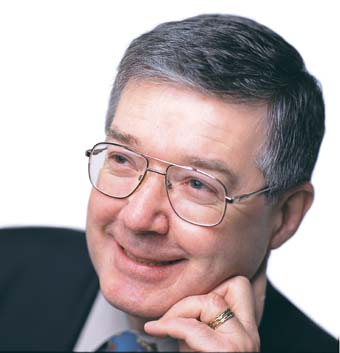
John R. McDougall is currently CEO of SynBioBlox Innovations Ltd. and of the Bio-Conversion Databank Foundation. He has 50 years of experience in 75 countries in the natural resource, IT, manufacturing, consulting, real estate and investment industries as well as research and development and academia. He retired from Canada’s National Research Council after six years as President, a position he accepted after 12 years as CEO of the Alberta Research Council. He was the inaugural Chair in Management for Engineers at the University of Alberta from 1991-97, and he initiated Innoventures Canada Inc. in 2006 to bring together Canada’s leading research and technology organizations providing technology development, demonstration and deployment services as centers of excellence for commercialization and research.
In the private sector, after eight years with a multinational, he managed and founded firms in real estate, investment and development, frontier exploration and logistics, project management, technology development, economics and economic development, financial and business planning, data processing and custom software development and natural gas brokerage. He has also served as an outside director or advisor to several public and private firms.
John is an active volunteer in business, professional and not-for-profit organizations where holding leadership positions in local, national and international organizations such as The Edmonton Chamber of Commerce and World Trade Centre, Capital Care Foundation, Engineers Canada, St. John’s Ambulance, Eureka and the G8 Heads of Research Organizations. He has also served on dozens of academic and government committees and agencies.
He has received medals and recognition including the 2015 PICMET award for Leadership in Technology Management, Honorary membership in the Mexican College of Civil Engineers and the Queen’s Gold and Platinum Jubilee Medals.
Dr. Antonio Pita Szczesniewski, University Relations and Project Consultant, Cemex Research Center - Switzerland
The notion of the Quadruple Helix expands upon the traditional Triple Helix of innovation, involving the
three main actors: government, academia, and the business sector by adding a fourth key actor: civil
society in recognition of the importance of citizen participation and the active role of civil society. This
approach is based on the idea that collaboration among these four actors is crucial for fostering
innovation, competitiveness, and sustainable economic growth in the present 4.0 industrial revolution.
Generally, industry is still recognized as the main and leading influential actor due to its ability to drive
innovation and the economy. However, there has been a growing recognition of the present imbalance
that the other three actors have with industry as well as between themselves due to paradigms that are
still being clung to from the third industrial revolution. This situation resembles the typical S-Curve
pattern and paradigm influence that follows the evolution of an industry, product, or business model
over time and a review will be made of characteristics of each imbalance as well as the paradigm shifts
that are already in the making.
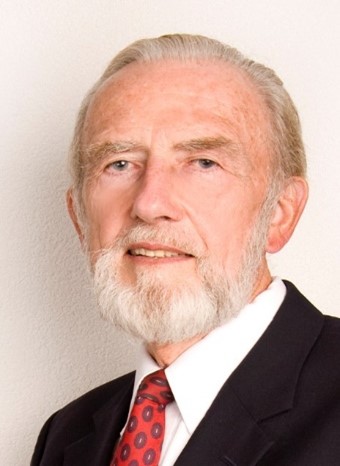
Dr. Antonio Pita Szczesniewski is currently university relations and project consultant for Cemex’s Research Center in Switzerland and is director of the Swiss International Academic Delegation of the Tecnologico de Monterrey. He started his career as a professor in the department of Thermodynamics, Fluid Mechanics and Control Engineering of the Tecnológico de Monterrey and as director of the Fluid Mechanics Laboratory he received a research grant awarded by the Organization of American States for the Construction of 3D Boundary Layer Wind Tunnel. He then held positions as head of the department of Professional and Scientific Development, Vice-President of Divisional Technology and Director of Vitro’s Corporate R&D Center, and later as senior R&D engineer scientist at Vitro’s Swiss
Research Center. He has published articles in leading journals, holds 3 US and World Patents on Glass
Manufacturing and 50 Special Technical Reports. He is a member of the Mexican Academy of Engineering and was a member of the Scholarship and Grants Committees for the Mexican National Science and Technology Council (CONACYT). Dr. Pita received a PhD in Solid and Fluid Mechanics as well as a master’s degree from the University of Iowa and a Bachelor of Science degree from the Johns Hopkins University.
Dr. Christopher L. Tucci, Professor, Imperial College, London, UK
Digital technologies are everywhere, from generative AI to new mobile telecommunications, drones, cloud computing, 3D printing, Internet of Things, virtual reality, Web3, and maybe someday quantum computing. They are changing the way we live, consume, work, produce things, enjoy entertainment, and much more. Digital technologies are also creating enormous opportunities for organizations across virtually all sectors of the economy. In this presentation, Professor Tucci will take us on a tour of digital “disruption,” creative destruction, open innovation, corporate venturing, crowdsourcing, and more. He will also discuss how innovation management can help organizations of all sizes and in all sectors create and capture value, and what kinds of innovation management cultures, practices, and programs are most effective.
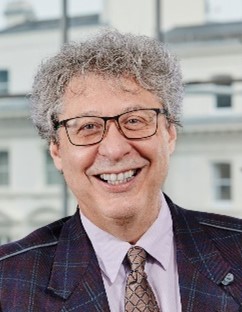
Dr. Christopher L. Tucci is Professor of Digital Strategy & Innovation at Imperial College Business School, where he directs the Centre for Digital Transformation and is co-Director of I-X, a new campus concept for Imperial College London on AI, data, and digital topics. Professor Tucci held the Chair in Corporate Strategy and Innovation from 2003-2020 at EPFL and was Dean of the College of Management there from 2013-2018. In 2018, he was Visiting Thought Leader at CEIBS in Shanghai, China. He received the degrees of Ph.D. in Management from the Sloan School of Management, MIT; SM (Technology & Policy) from MIT; and BS (Mathematical Sciences), AB (Music), and MS (Computer Science) from Stanford University. He was an industrial computer scientist involved in developing Internet protocols and applying artificial intelligence tools in the 1980s. Professor Tucci teaches courses in Deep Tech Acceleration, Design Thinking, Digital Strategy, AI Ventures, and Innovation Management. His primary area of interest is in how firms make transitions to new business models, technologies, and organizational forms. He also studies crowdsourcing, Internetworking, and digital innovations. He has published articles in, among others, Academy of Management Review (AMR), SMJ, Management Science, Research Policy, Communications of the ACM, SEJ, Academy of Management Annals, and JPIM. His article with Allan Afuah, “Crowdsourcing as solution to distant search,” won the Best Paper of 2012, Best Practice Implications Award of 2019, and the Decade Award of 2022 for AMR. He has served in leadership positions in the Academy of Management and the Strategic Management Society.
©2018 PICMET Inc. All rights reserved.